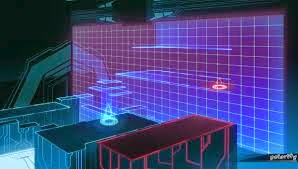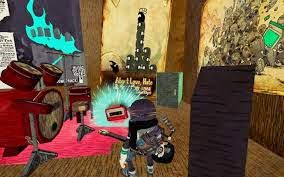To compete with (or rather to cash in on) the unbelievable success of Super Mario Bros., a C64 game called The Great Giana Sisters was released that was as incredibly obvious clone of the first SMB, with an almost identical opening level. Despite being a clone, many felt it was actually a superior game, and after Nintendo's unsurprising threat of legal action led to it being pulled from store shelves, it still became a cult hit and a sought after collector's item. At some point in the following two decades Nintendo must have made peace with the idea, because an unexpected sequel, Giana Sisters DS, was released as a Nintendo DS exclusive, continuing the adventures of Giana and her sister Maria. Now that we've established a pedigree, let's discuss the latest escapade of these sisters.
In my review of Wake I mentioned what a great time it is now for indie games. In my last review on Polarity, I talked about KickStarter and how it was helping new games get made. Late last summer, I started backing a lot of indie games on KickStarter that I thought looked like they would be fun. Out of all of them, the one that I was most looking forward to was a game called Project Giana, featuring the familiar sisters. This project eventually evolved into Giana Sisters: Twisted Dreams.
Giana Sisters: Twisted Dreams is a sides scrolling 2.5D platformer that brings back fond memories of not only the classic Mario series, but also the early Sonic the Hedgehog games. The team at Black Forest must have spent hours replaying classic platformers to capture that magic. It also has a distinctly modern feel to it, thanks in no small part to being part of a growing trend of dual reality platformer games such as Guacamelee or Fractured Soul (expect reviews from me on both of those at some point in the future) where the player must switch quickly back and forth between two separate worlds that are almost the same, but slightly different in order to proceed through the game's various levels.
The duality in Giana Sisters: Twisted Dreams comes from Giana's two forms. There's "Cute Giana", the little blonde girl in the blue dress with the strong Alice in Wonderland vibe who exists in the nightmarish world filled with demons and desolate landscapes. And then there is "Punk Giana", the rebellious mix of teen angst and nonconformity who exists in a friendly yet equally dangerous fairy-tale world of singing birds and mushroom houses. Giana must take advantage of the strengths of both sides of her personality in order to rescue her sister Maria who has been swallowed by a dragon.
I have to admit, that most of the information in that previous paragraph I didn't know until I looked it up while researching for this review. As in the classic platformers of the 2D era, the story telling is kept to a minimum, but unlike those classic games, there's no booklet describing what's going on for you. While I saw a dragon swallow somebody in the first level, and that same dragon turned out to be the final boss who spit the girl out at the end of the game, I never actually understood that the girl was Giana's sister, and instead assumed that these two different looking and acting girls where the sisters, and not two versions of the same person. Either way, it doesn't effect the gameplay, or make it any less fun.
The key to success in this game is in understanding and utilizing the differences between the two Gianas, and the worlds they inhabit. The first major difference is in their special moves. Cute Giana has a twirl that acts both as a double jump and a glide, allowing her to travel long distances and safely navigate down dangerous spike filled pits of doom. Punk Giana can launch herself short distances to take out some enemies, and bust through certain barriers. Various contraptions throughout the game also exist that only react to one Giana or the other, or need a certain special move to activate. Some platforms or enemies also reverse direction when switching from one to the other, and gates and bridges will open or close depending on which one you are currently using. Some platforms are only solid for one or the other, and you often have to switch mid-jump to navigate an area.
Speaking of the areas, Giana Sisters: Twisted Dreams has some impressive level design. As would be expected, the early levels are simple, and new elements are introduced one at a time so the later levels can be incredibly difficult, but what makes it so impressive is the pacing. Each time an item or idea is reused, it's slightly more complex than the last time. It happens so smoothly that by the end of the game you are pulling off meticulous twitch control combos and navigating within pixels of death more often than not, but the levels never feel repetitive or unfair.
That's not to say that the game is easy. Far from it, you will die in this game, and you will die a lot. Luckily, the game gives you infinite lives. Using the now standard Super Mario World/Sonic the Hedgehog style checkpoints, the levels challenge you to make sometimes painstakingly slow progress. The later levels offer many more opportunities to die in between checkpoints, and require sections of the level to be memorized and traversed flawlessly in order to reach the next checkpoint. An unlockable hardcore mode removes all of the checkpoints and starts you back at the beginning of the level after each death. An unlockable super hardcore mode starts you back at the beginning of the first level after each death. I don't know who is playing on this mode, but it must be somebody with better reflexes and more free time than I have!
Indie games are generally known to have sub-par presentation, but Giana Sisters: Twisted Dreams has the opposite. The graphics are beautiful, and rather than cutting or fading between worlds, every single element in the game smoothly morphs between forms when switching from Punk Giana to Cute Giana and back. Demons become birds, spikes become flowers, oversized skeleton limbs become hollowed out logs. Watching the entire world transform in front of your eyes so smoothly it seems natural is a sight to behold. There's no skimping on the audio side either. Even back when I was watching the early gameplay footage on the KickStarter preview video, I was amazed by the creativity offered by the game's music. For the Cute Giana world, gothic choirs blend with pop synths to make an impressive blend of ambient yet dancable soundscapes with melodies you can hum along to, yet never seem to get old. On the Punk Giana side, all of the same compositions are performed by a live metal band! Hearing that chiming synth melody transform into a squealing guitar solo and back as the pulsing synth bass transforms into pounding drum fills gives the game's music a level of explorability rarely seen outside of the rhythm game genre!
As much as I enjoyed this game, and as much as I've been gushing over it so far, I can't let it completely off the hook. Giana Sisters: Twisted Dreams has a problem. It has a design flaw that prevents many who play it from ever even attempting the final level. I've mentioned already that levels late in the game are hard, but that's not the issue. I've played plenty of hard games, and most platform game fans that I know actually look forward to extreme challenge towards the end of games. No, this problem is a poor choice that was made on purpose. The last level of each of the game's three zones is locked by default. These levels need to be unlocked by earning stars in earlier levels of the region. The first part of the problem is than it's never made clear that this is how you unlock the level. Sure, the padlock icon on the level is shaped like a star, so it can be assumed that earning stars is how to unlock it, but it's never specifically stated that the stars must be from the same region. Even if you manage to piece that together after wasting time replaying levels from earlier regions, it is never made clear how you actually earn the stars in the first place! Even after digging through online forums and seeing exactly how stars are earned, earning enough region three stars to unlock level 3-10, the game's final level, is still incredibly difficult. It's to the point where many members of various Giana Sisters forums simply consider the game beaten if you are able to complete level 3-9. The vast majority of people who play this game, even those that invest the hours into it, will never see the final level outside of a Youtube video.
Is this design flaw enough to deter somebody from playing Giana Sisters: Twisted Dreams? I would say no. The flaw isn't even something that is noticed until you're almost at the end of the game anyway, and by then you will have more than gotten you time and money's worth of enjoyment out of this amazing game. If you grew up on 2D platformers, or just got into them later, this is a game worth playing. Despite its history, it's not nostalgia, it's not retro, it is every bit a modern side scrolling gaming masterpiece that you more than likely will never finish, but probably won't mind.





.jpeg)


.jpeg)



.jpeg)














.jpeg)


.jpeg)








